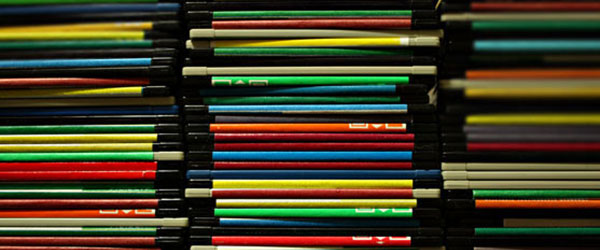This article is more than 5 years old.
As a librarian, my job is to preserve library materials: books, paper items such as posters or hand printed broadsides, and any other paper materials the library has acquired. It’s rewarding. I take a very old and brittle book, carefully mend the broken joints and torn pages, and restore it to usability. This is good in every sense of the word. I’ve had the privilege of handling and restoring books like: The Thanksgiving Visitor (a 1967 edition of 300 signed by the author, Truman Capote); an 1854 printing of The Poetical Works of John Keats and Leaves of Grass (1855) by Walt Whitman. First of all, something that was damaged has been repaired. Next, we’ve restored the contents of this book for access by library users. And, in a global sense, the intellectual content of this item remains available and accessible for the immediate future. In this form of traditional preservation, we attempt to keep things unchanged.
How should we then approach materials that never existed in print? These would be materials that were “born digital.” Do these materials have the same importance as print materials? Should we attempt to keep these “digital objects” unchanged? The fact is the preservation of digital materials is the opposite of preserving paper materials: Digital objects must be changed to be preserved. Digital media lacks permanence, depends on computer readability, and exists in a variety of formats. This is the future of preservation.
Today, digital materials are being created faster than we can imagine them. In order to preserve these materials, we need better storage media, digital data renewal strategies, and format migration plans. We also need to think about the preservation of our digital objects from the moment of their creation (or before).
There are a number of initiatives that attempt to address the issues of digital preservation:
- National Digital Information Infrastructure & Preservation Program (NDIIPP): The Library of Congress’ Digital Preservation program was established by Congress in 2000 to collect, preserve, and make available digital content.
- National Recording Preservation Act: A bill to maintain and preserve sound recordings and collections of sound recordings that are culturally, historically, or aesthetically significant. A very innovative program called IRENE (Image, Reconstruct, Erase Noise, Etc.) has been developed by physicists at the Library of Congress. IRENE uses a camera connected to a computer to visually scan the grooves on vinyl records and wax cylinders. This “hands-off” technique can restore the sound of damaged and fragile sound recordings.
- The National Digital Newspaper Program (NDNP): A partnership between the National Endowment for the Humanities, the Library of Congress, and state projects to provide enhanced access to United States newspapers published between 1836 and 1922.
- Digitizing American Imprints: A program to digitize thousands of public-domain works, with a major focus on at-risk “brittle books” and U.S. history volumes in The Library of Congress.
These national programs help to move us towards best practices in digital preservation and to think about how we, as individuals and institutions, will preserve our digital materials now and in the future.
In fact, this past week, the Library of Congress has announced it will keep a digital archive of every public tweet that has been broadcast on Twitter since its inception in March 2006. Everyone has seen the rapid adoption of social media. Are these entries and other social media-enabled communication just disposable comments or are they the “primary source materials” of the future?
Today, librarians, archivists, and others are scrambling to restore and preserve sound and print materials from the past. In the future, will these same people be scrambling to recover tweets and posts from today? What significance will social media hold in the future? How do you preserve such fast and fleeting media? What will become of our digital life?


1 Comment on ‘Our Digital Life’
Gosh, I have a gazillion digital photos all over the place, duplicated multiple times and I need to organize just the already-digital stuff, I can’t even think about the pre-digital archives. But I do know enough to keep them out of the attic and the basement!